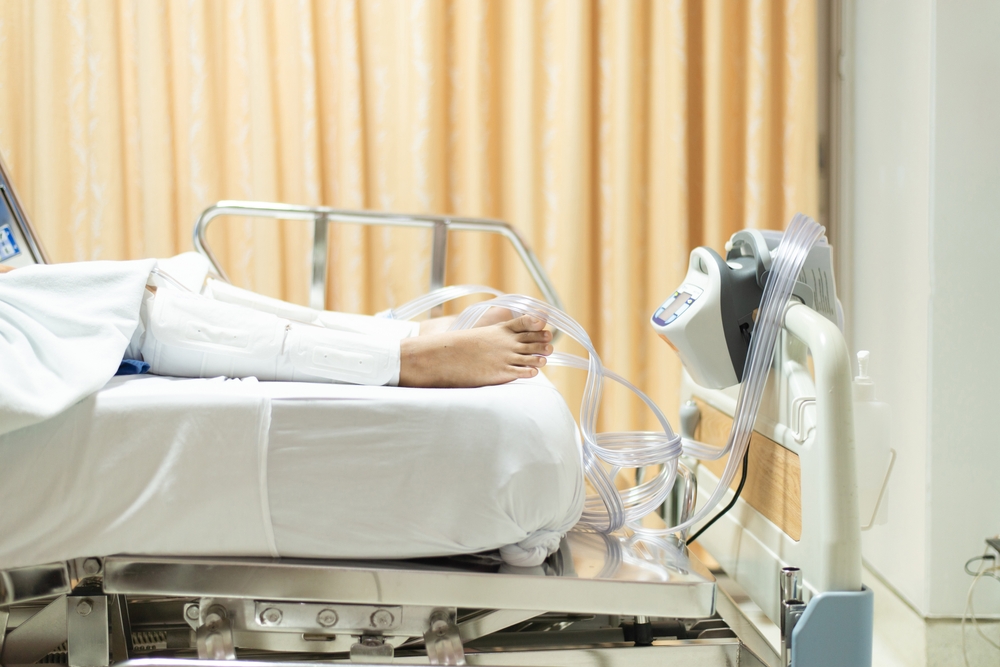Foam wraps can be an integral part of compression therapy to help speed up recovery in various ways:
Reducing Swelling: One of the primary benefits of compression is reducing swelling or edema. After surgery, the body often responds to inflammation, leading to localized swelling. Excessive swelling can impede the healing process and cause discomfort. When applied with the appropriate pressure, foam wraps can help minimize swelling by facilitating the drainage of excess fluid from the surgical site.
Enhancing Blood Flow: Compression can improve blood circulation in the treated area. Proper blood flow is crucial for delivering oxygen and nutrients to the tissues, essential for healing. By compressing the area, foam wraps can promote blood flow and prevent stasis, reducing the risk of complications like blood clots.
Pain Management: Swelling and inflammation are often associated with pain and discomfort. By reducing swelling and enhancing blood flow, foam wraps can help alleviate pain, making the recovery process more tolerable for the patient and reducing the need for pain medications.
Preventing Complications: Properly applied compression can reduce the risk of postoperative complications such as seromas (fluid accumulation), hematomas (blood clots), and infection. It supports the surgical site, helping maintain tissue integrity and minimize the risk of complications. Foam wraps are also a cleaner source of wound dressing with fewer particulates, which can cause complications in healing.
Accelerating Healing: Compression therapy can facilitate the body’s natural healing processes. By maintaining stable tissue pressure, foam wraps can encourage the formation of granulation tissue and collagen, essential for wound closure and scar formation.
Customized Pressure: Foam wraps are available in various thicknesses and densities, allowing healthcare professionals to customize the level of compression based on the patient’s needs and the surgical procedure performed. This ensures that the compression is safe and effective for each case.
Patient Comfort: Foam wraps are typically soft and cushioned, making them comfortable for extended periods. This comfort factor can encourage patient compliance with compression therapy, as they are more likely to continue using the wraps as prescribed.
Scar management: Foam wraps may also be used in scar management post-surgery. They can be applied over incisions to help distribute tension evenly, which may reduce the likelihood of hypertrophic scarring or keloids.
Biocompatibility: Medical-grade polyurethane foam is not toxic or harmful to living tissue.
Surgeries that commonly use foam compression:
- Orthopedic Surgeries: Foam wraps can be used after orthopedic procedures such as joint replacement (e.g., hip or knee replacement), fracture repair, or ligament reconstruction. They help reduce swelling, provide support, and aid in pain management.
- Vascular Surgeries: After vascular surgeries, especially those involving veins or arteries, foam wraps may promote circulation and reduce the risk of complications like deep vein thrombosis (DVT).
- Plastic and Reconstructive Surgeries: Foam wraps can be applied after procedures such as breast reconstruction, abdominoplasty (tummy tuck), or facelift surgery to reduce postoperative swelling, enhance tissue healing, and improve patient comfort.
- General Surgery: Foam wraps may be used in various general surgical procedures to provide compression and support, particularly in surgeries involving the abdominal area.
- Dermatological Procedures: Foam wraps can aid in recovery following dermatological procedures such as skin grafts, scar revision surgery, or Mohs surgery.
- Burn Care: For burn patients, foam wraps can be applied to manage swelling, protect healing skin grafts, and improve overall wound healing.
- Lymphedema Management: Foam wraps, along with other compression garments, are often used to manage lymphedema, a condition characterized by swelling due to a compromised lymphatic system.
- Wound Care: In some cases of chronic wounds or pressure ulcers, foam wraps may be used in wound management to reduce swelling and promote healing.
- Minimally Invasive Surgery: Even in minimally invasive procedures (e.g., laparoscopic surgery), foam wraps may support the surgical area and minimize postoperative discomfort.
- Trauma Surgery: In cases of traumatic injuries requiring surgical intervention, foam wraps can provide initial support and manage postoperative swelling.
It’s important to emphasize that a healthcare professional should always guide the use of foam wraps in surgical recovery. The choice of foam wrap type, compression level, and application technique will be specific to the patient’s needs and the surgical procedure performed. Regular monitoring and follow-up with the healthcare team are essential to ensure that compression therapy is safe and effective.
Foamtec Medical is the global leader in technical foam manufacturing. We can customize foam for medical compression applications and manufacture end-use components designed to maximize healing efficiency.
Contact us today to discuss your project!
[/et_pb_text][et_pb_button button_url=”#short-form” button_text=”Contact” button_alignment=”center” _builder_version=”4.22.1″ _module_preset=”default” global_colors_info=”{}”][/et_pb_button][/et_pb_column][/et_pb_row][/et_pb_section][et_pb_section fb_built=”1″ admin_label=”Popup – #short-form” module_id=”short-form” module_class=”popup” _builder_version=”4.19.1″ _module_preset=”default” width=”950px” da_is_popup=”on” da_popup_slug=”short-form” da_disable_devices=”off|off|off” border_radii=”on|12px|12px|12px|12px” box_shadow_style=”preset1″ global_colors_info=”{}” da_exit_intent=”off” da_has_close=”on” da_alt_close=”off” da_dark_close=”off” da_not_modal=”on” da_is_singular=”off” da_with_loader=”off” da_has_shadow=”on”][et_pb_row _builder_version=”4.19.1″ _module_preset=”default” width=”85%” global_colors_info=”{}”][et_pb_column type=”4_4″ _builder_version=”4.19.1″ _module_preset=”default” global_colors_info=”{}”][et_pb_text _builder_version=”4.19.1″ _module_preset=”default” header_3_font=”|700|||||||” header_3_text_align=”center” header_3_text_color=”#283891″ global_colors_info=”{}”]Tell Us About Your Project
[/et_pb_text][et_pb_code _builder_version=”4.19.1″ _module_preset=”default” width=”80%” module_alignment=”center” custom_padding=”25px|25px|25px|25px|true|true” border_radii=”on|12px|12px|12px|12px” border_width_all=”1px” border_color_all=”#CCE3E2″ global_colors_info=”{}”]Oops! We could not locate your form.
[/et_pb_code][/et_pb_column][/et_pb_row][/et_pb_section]



